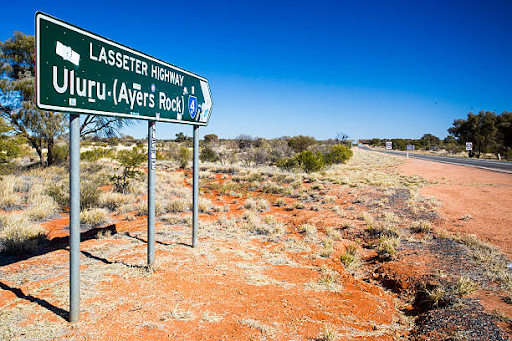Uluru, also known as Ayers Rock, stands as a majestic monolith in the heartland of Australia, steeped in Aboriginal lore and natural splendor. This iconic sandstone formation is not only a geological wonder but also a spiritual epicenter for the Anangu people, the traditional custodians of the land. Rising dramatically from the Central Australian desert, Uluru has long fascinated tourists and scholars alike. Its remote location near Alice Springs doesn’t hinder the adventurous who seek to uncover its stories and marvel at its changing hues. In this article, we will explore the history, cultural significance, and environmental importance of Uluru, providing insights into why this ancient landmark commands such reverence and respect.

The Cultural Tapestry of Uluru
The Anangu have inhabited the area around Uluru for thousands of years, with a rich cultural heritage intricately linked to the land. Uluru forms a central part of their mythology and is a living testament to their Dreamtime stories. These stories narrate the creation of the land by ancestral beings and set forth the laws for living in harmony with nature. The deep spiritual connection the Anangu share with Uluru is evident in their ongoing cultural practices, many of which remain sacred and undisclosed to outsiders. Visitors can, however, engage with this ancient culture through various Uluru tours from Alice Springs, which offer a respectful glimpse into the Anangu way of life.
The Intersection of Culture and Tourism
The allure of Uluru draws visitors from around the globe, seeking to experience its mystical presence. This influx of tourism presents both opportunities and challenges for the preservation of Anangu culture and the natural environment. Responsible tourism practices are critical to ensure the impact of visitors is managed thoughtfully. Tensions between the desire to explore and the need to conserve have sparked conversations around tourists’ roles in supporting indigenous rights and environmental stewardship. Through collaboration with the Anangu, new paths pave the way for a tourism model that honors the sacredness of the site while allowing people to witness its beauty.
Exploring the Natural Splendor of Uluru
Uluru is a geological marvel, thought to have formed over some 550 million years. It is composed primarily of arkose, a coarse-grained sandstone rich in feldspar, which gives the rock its distinct red hue. This hue can change dramatically at dawn and dusk, casting a spell on all who witness it. The monolith stands at a towering 348 meters and extends several kilometers beneath the Earth’s surface. Scientific theories suggest that the rock started as sediment at the bottom of an ancient sea and was later uplifted and weathered into its current form. The traditional owners, however, have their own narratives about Uluru’s creation, which are equally as fascinating and significant.
Uluru’s Unique Flora and Fauna
The environment around Uluru is an exemplar of adaptation, with a variety of plant and animal species thriving in seemingly inhospitable conditions. The resilient flora includes species like the Mulga tree, Spinifex grass, and the iconic Desert Oak, each adapted to conserve water and survive the harsh climate. The fauna is equally adapted, with reptiles like the Perentie lizard and mammals such as the Black-flanked Rock-wallaby calling the park home.
| Species | Type | Adaptation |
|---|---|---|
| Mulga Tree | Flora | Deep root system |
| Spinifex Grass | Flora | Water storage in leaves |
| Desert Oak | Flora | Long taproot |
| Black-flanked Rock-wallaby | Fauna | Night-time foraging |
| Perentie Lizard | Fauna | Scales to retain moisture |
Experiencing Uluru’s Magic
Timing your visit to Uluru can greatly affect your experience. The region’s climate varies between the hot and dry season to cooler but still arid months. Many prefer visiting during the Australian winter (May to September), offering more comfortable temperatures for exploration. Beyond the climate, planning your visit around cultural events can enrich your understanding and appreciation of the area. Arriving with respect for the local customs and an awareness of the sacred nature of the site will ensure a more meaningful encounter.

Activities Around the Sacred Rock
While climbing Uluru is no longer permitted, there are numerous activities that offer immersive experiences. Guided walks around the base of Uluru provide insight into its natural and cultural history. Visitors can choose from several trails with varying lengths and difficulties.
- Uluru Base Walk – A comprehensive 10.6 km track encircling the entire monolith.
- Mala Walk to Kantju Gorge – A shorter, ranger-guided option focused on Anangu culture.
For those seeking to capture the beauty of Uluru, several designated viewing areas provide the perfect vantage points for sunrise and sunset photography, offering a spectacle as the rock’s colors shift with the light.
Uluru in the Modern Day: Challenges and Changes
The preservation of Uluru and its surroundings faces various environmental challenges, from climate change impact to the risks posed by tourism. Initiatives to mitigate these threats include the ban on climbing and strict guidelines for visitors to minimize their footprint. The park’s management plan outlines important measures for protecting the landscape and its biodiversity, ensuring the sustainability of the region for future generations.
Conclusion
Uluru is much more than a geographical landmark; it is a powerful symbol of timeless wisdom and natural majesty that continues to captivate hearts and minds. This sacred site reminds us of the rich tapestry of human history that is interwoven with the natural world. By visiting with mindfulness and reverence, we honor the Anangu custodians and contribute to the preservation of this magnificent testament to our planet’s past and future.
FAQs About Uluru
- Q1: Why is Uluru considered sacred by the Anangu people?
- A1: Uluru is considered sacred by the Anangu people because it is an important part of their creation mythology and spiritual belief system, serving as a focal point for Tjukurpa, or lore, which dictates the harmonious relationship between people, the land, and all life.
- Q2: Can tourists still climb Uluru?
- A2: No, climbing Uluru was prohibited on October 26, 2019, out of respect for the Anangu people’s cultural beliefs and to protect the site’s delicate ecosystem.
- Q3: What is the best time of day to view Uluru?
- A3: Sunrise and sunset are the best times to view Uluru, as the rock’s rich colors become most vibrant due to the angle of the sun’s rays interacting with its iron content.
- Q4: Are there any accommodations or facilities near Uluru?
- A4: Yes, accommodations and facilities are available at the Ayers Rock Resort in Yulara, which caters to a range of preferences, from camping to luxury stays.
- Q5: How can I learn more about the cultural history of Uluru while visiting?
- A5: To enrich your knowledge of Uluru’s cultural history, participate in Anangu-led tours, visit the Uluru-Kata Tjuta Cultural Centre, and take part in cultural workshops offered in the area.
